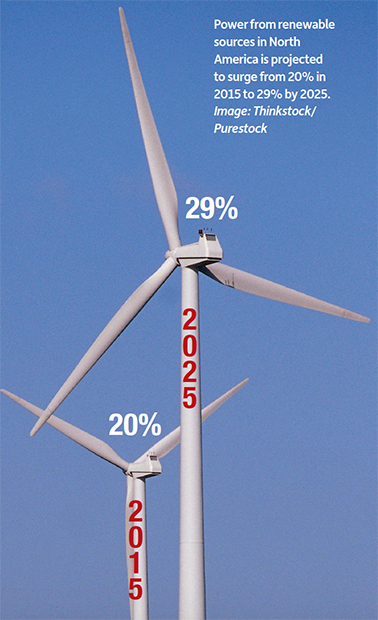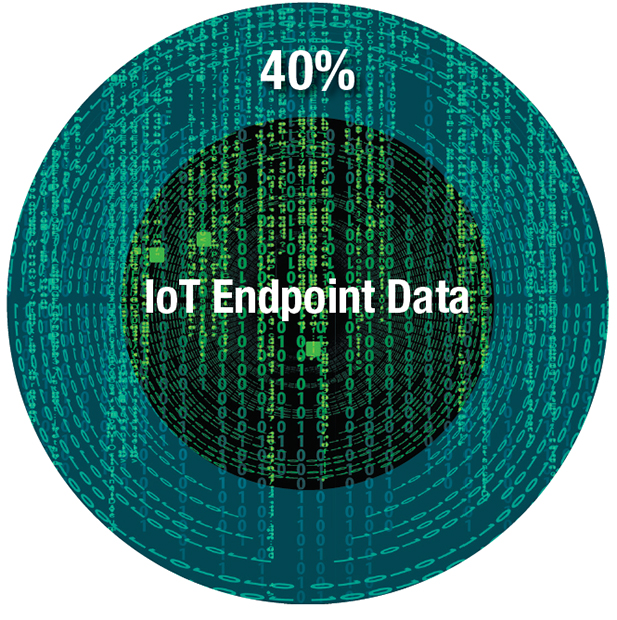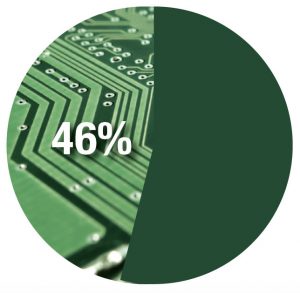Latest News
June 1, 2018
With demand for clean, renewable energy on the rise, there is more momentum behind efforts to leverage wind turbines and solar panels as reliable and cost-effective power sources.

Companies throughout the energy sector are capitalizing on digital technologies—the industrial Internet of Things (IIoT), high-end analysis capabilities, and sophisticated paradigms such as edge and high performance computing (HPC)—to help optimize wind turbines and solar panels for maximum power generation while facilitating predictive maintenance.
By adopting new software platforms, IIoT connectivity, machine learning capabilities and HPC resources, the energy industry is aiming for a variety of benefits. Wind and solar energy are regarded as intermittent generation resources because they produce power only when the sun shines or the wind blows. By performing simulations and analysis via machine learning, utility players and wind and solar farm operators can engage in real-time load balancing to maximize output while increasing equipment availability and agility.
The process starts by connecting a burgeoning ecosystem of renewable solar farms and wind turbines to the IIoT and outfitting them with sensors to collect data on performance. This real-time data stream, augmented and contextualized by additional sources such as weather data, geospatial data and energy pricing information, is then automatically parsed by machine learning and artificial intelligence (AI) software to discover critical insights and patterns that can aid in optimization and predicting potential failures. Experts in the field project that improving the maintenance and efficiency of turbines can increase a wind farm’s output by as much as 20%.
“By capturing local data about the wind turbines and solar panels and inverters, these assets can be monitored for predictive maintenance to ensure they are always available and ready to operate when conditions are favorable,” explains Brent Hodges, Edge IoT Strategy and Product Planning for Dell EMC. “Secondly, by capturing local data from many individual assets and locations, this data can be fed into large data storage and compute systems to perform sophisticated analysis of operating conditions and to better predict power generation forecasts for the power grid.”
Hodges says applications such as predictive maintenance or real-time quality control, for example—are early on the maturity curve for IIoT adoption because they are more likely to deliver hard ROI.
Power Rain or Shine
Wind and solar generation sources have enjoyed limited usage as part of a distributed power generation mix because of their intermittent performance. Power grid operators, wind farms and research entities are working to change that dynamic through simulation and big data initiatives. The pioneers are capturing and analyzing data to adapt turbine performance—rotating the position of blades, changing the hours powered or shifting blade speeds—hundreds of times per second to match conditions for peak wind energy generation or to ensure solar panels effectively track the sun for optimal energy harvesting.The National Center for Atmospheric Research (NCAR) is in the forefront of this emerging trend. In one case, a prototype advanced wind prediction system was developed to help utility companies successfully integrate electricity produced by wind assets into their overall power grid. Along with specialized modeling functionality it developed, the NCAR system taps into local weather data from a variety of sources to pinpoint wind conditions in the vicinity of the wind farms, as opposed to applying traditional statistical forecasting methods.

According to IDC, nearly 40% of data created from IoT endpoints will be stored, processed, analyzed, and acted upon close to, or at the edge of, the network by 2019.
Similarly, the Energy Department’s Energy Systems Integration Facility (ESIF) on the campus of the National Renewable Energy Laboratory (NREL) is leveraging HPC for large, complex datasets that scale beyond traditional databases. Modeling, simulation, hardware and aggregated big data come together to answer the what-if questions that are necessary to make wind and solar energy part of a distributed energy grid, officials there say. The ESIF’s system, capable of crunching more than a quadrillion calculations per second and developed in partnership with Intel, is the foundation for numerical modeling and simulations, according to ESIF officials.
Given the size and complexity of such large-scale models, HPC resources are critical for running the simulations along with the AI-based software that churns through any real-time data collected from IIoT-enabled turbines. HPC horsepower is also essential for doing real-time trending and detailed visualizations of the data to aid in effective decision making.
“HPC architectures allow for large simulations to be broken up over multiple compute nodes so that the run times can be significantly decreased,” says Eric Fox, director of HPC marketing, at Intel. “As we couple near real-time field data with field wide optimization, these shorter run times for simulations will become more and more critical. Traditional IT architectures are not designed to run multi-core efficiently.”
GE has also been a pioneer in the potent mix of IIoT, analytics, and high performance computing for renewable energy applications. GE’s PowerUp Platform, a software-enabled platform that leverages environmental conditions to customize key performance parameters, serves as the basis for the GE Digital Wind Farm. It uses digital infrastructure to sync up individual wind turbines in a wind farm that can be optimized for efficiency—by some measures, up to 20% more energy output, resulting in an estimated $50 billion in value for the wind industry. GE PowerUp also leverages a GE Predix-ready gateway with Intel processor technology, which lets the Predix-powered software run at the optimal point, either in the cloud or at the edge, embedded in operations.
“We employ super-large [HPC] clusters of analytical compute capacity wrapped around Predix to move data in and run analytical results—it’s the underlying platform that makes everything scale in a large way,” explains Joe Nichols, GE’s COO for industrial applications. “IIoT at massive scale requires enterprise thinking—you have to be able to do compute from the edge to the data center.”
Close to the Edge
Scalability is a key requirement of new renewable energy management platforms, so compute capacity needs to be extensible with distributed capabilities. Most wind farms are situated in remote locations that often experience network bandwidth and reliability issues. That’s where intelligent edge computing solutions come into play. These solutions enable operators to analyze data locally in real-time without relying on continuous network availability and access to a cloud analytics platform. Forty-six percent of utilities surveyed in September 2016 were investing or planned to invest in digital grid capabilities over the next 12 months.
Forty-six percent of utilities surveyed in September 2016 were investing or planned to invest in digital grid capabilities over the next 12 months.Dell EMC’s alliance with FogHorn Systems, which brings big data and real-time stream processing to on-site locations, showcases how edge computing muscle is being applied to solve renewable energy challenges. The solution analyzes data from a variety of sensors and SCADA devices using edge intelligence to enable real-time adjustments to the blade pitch, rotor speed or turbine orientation. The same information can also be leveraged to spot potential failures or operation choke points, allowing maintenance personnel to preemptively diagnose problems remotely. Workers can then be deployed to a physical site armed with the knowledge of what they need to fix and with the proper replacement parts and tools, addressing the problem prior to failure and avoiding costly downtime of the turbine or solar panel asset.
The ability to combine IIoT architectures with HPC and classic data centers is critical for optimizing where the compute is done based on the business requirements and economics, says Intel’s Fox. Intel’s Fog architecture facilitates running predictive maintenance analytics at the wind turbine, while pulling operational data at a central location for optimization of the entire wind farm. While this is possible with a traditional central data center, Fox says the economics are highly dependent upon available communications. Moreover, without such an architecture, the next step is not possible: That is, closing the loop between identifying a problem and making changes to address it.
“Fog architecture allows for heavy compute with near real-time control,” he explains. “Now optimization of individual components in a wind farm can be done locally, reliably and economically, while matching this with field-wide data being collected for central processing and overall optimization.”
As the energy sector weathers change, the combination of advanced computing and IIoT-enabled analytics is driving widespread use of solar and wind resources, transforming what was once an intermittent resource into a cost effective, reliable part of the energy mix.
More Info
Dell EMCNational Center for Atmospheric Research
Subscribe to our FREE magazine, FREE email newsletters or both!
Latest News
About the Author
Beth Stackpole is a contributing editor to Digital Engineering. Send e-mail about this article to [email protected].
Follow DE





